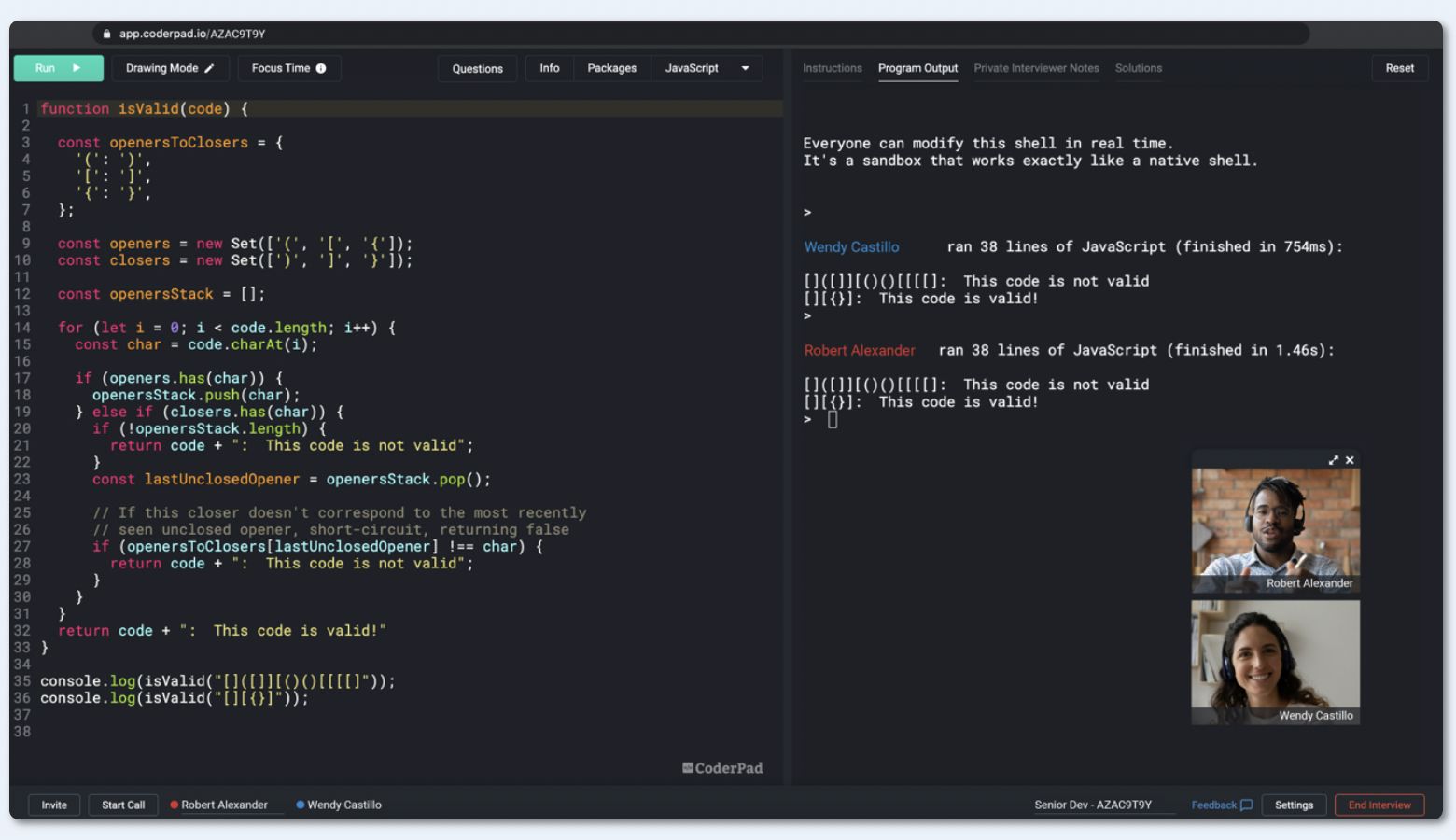Introduction
Algorithms are an integral part of coding and computer programming. They form the foundation of how software and applications operate, ensuring that tasks and processes are carried out efficiently and accurately. In the world of coding, an algorithm can be defined as a step-by-step procedure or set of rules designed to solve a specific problem or accomplish a particular task.
When you think about algorithms, imagine a recipe for your favorite dish. Just like a recipe provides a precise set of instructions for preparing a meal, an algorithm provides a clear roadmap for the computer to follow in order to perform a specific task. Without algorithms, software and applications would be unable to function effectively or deliver the desired results.
The significance of algorithms in coding cannot be overstated. They enable programmers to create efficient and optimized solutions to complex problems. By breaking down tasks into smaller, manageable steps, algorithms allow programmers to identify and address potential issues and enhance the overall performance of a program.
Furthermore, algorithms provide developers with a systematic approach to problem-solving. They help in simplifying complex problems and organizing the implementation process. With well-designed algorithms, programmers can save time, resources, and effort, ultimately delivering high-quality software products.
In the world of coding, algorithms possess certain characteristics that make them reliable and effective. Firstly, algorithms should be unambiguous, meaning that every step and instruction should be clear and well-defined. This ensures that programmers can accurately implement the algorithm without any confusion.
Secondly, algorithms should be deterministic, meaning that they produce the same results for a given set of inputs. This allows developers to trust that their algorithms will consistently deliver the same output, which is crucial for ensuring the reliability and stability of a program.
Additionally, algorithms should be efficient and have a finite number of steps. This means that they should offer optimal solutions within a reasonable timeframe, without unnecessary repetitions or delays. Efficiency is vital in coding as it contributes to faster execution and improved performance of software applications.
In the next sections, we will explore different types of algorithms, examples of popular algorithms in coding, algorithm design techniques, and how algorithms contribute to problem-solving in the coding realm. Through understanding algorithms and their importance, developers can take their coding skills to new heights and develop innovative solutions to various challenges.
Definition of an Algorithm
An algorithm is a specific set of step-by-step instructions or rules that are designed to solve a particular problem or achieve a specific task. It can be thought of as a well-defined process that takes an input, performs a series of operations or transformations, and produces an output. In the context of coding and computer programming, algorithms serve as the building blocks for creating software applications and systems.
At its core, an algorithm is a sequence of logical and mathematical operations that guide the computer in executing a task. It provides a clear and structured roadmap for solving problems and performing complex computations. By breaking down a problem into smaller subtasks and defining the steps required to solve each subtask, algorithms offer a systematic approach to problem-solving.
One important aspect of algorithms is their universality. In other words, an algorithm can be implemented on different programming languages and platforms, as long as the underlying logic and operations remain the same. This universality allows algorithms to be reusable and adaptable, making them valuable tools for programmers in various domains.
Moreover, algorithms can be classified based on their level of abstraction. Some algorithms are general-purpose, meaning they can be applied to a wide range of problems and scenarios. These algorithms are fundamental and form the basis of many computational tasks. On the other hand, some algorithms are designed to solve specific problems or address particular domains or industries.
Algorithms can also be classified based on their complexity. Some algorithms have a fixed number of steps and can be executed in a predictable and efficient manner. These are known as deterministic algorithms. Conversely, there are also non-deterministic algorithms that involve some level of randomness or unpredictability in their execution.
Overall, algorithms are crucial in the field of coding and computer programming. They provide a structured approach to problem-solving, allowing programmers to develop efficient and optimized solutions. Understanding algorithms and their various classifications is essential for every developer, as it forms the foundation for building robust and functional software applications.
Importance of Algorithms in Coding
Algorithms play a pivotal role in coding and computer programming. They are essential for designing and creating efficient, reliable, and scalable software applications. Here are some of the key reasons why algorithms are important in coding:
1. Efficiency: Algorithms allow developers to optimize the performance of their code by providing a systematic approach to problem-solving. By breaking down complex tasks into smaller, manageable steps, algorithms enable programmers to identify potential bottlenecks or inefficiencies and improve the overall efficiency of their code. Efficient algorithms can significantly reduce the execution time of a program, resulting in faster and more responsive software applications.
2. Reusability: Algorithms are reusable components that can be applied to multiple problems or scenarios. Once a programmer has designed and implemented an algorithm for a specific task, they can reuse it in different projects or adapt it to solve similar problems. This reusability not only saves time and effort but also promotes consistency and standardization across software development projects.
3. Scalability: When developing software applications, it is crucial to consider their scalability, especially as the project grows in complexity and size. Algorithms provide a foundation for building scalable applications by enabling developers to design code structures that can handle increasing data loads and perform efficiently regardless of the size of the input. Scalable algorithms are essential for accommodating growing user bases and expanding functionalities without sacrificing performance.
4. Problem-solving: Algorithms are powerful tools for problem-solving in coding. They provide a structured approach to breaking down complex problems into smaller, more manageable subproblems. By tackling each subproblem individually and designing algorithms to solve them, programmers can develop effective solutions to even the most challenging tasks. Algorithms help in analyzing problem requirements, identifying dependencies, and implementing appropriate logic to achieve the desired outcome.
5. Optimization: Optimization is a critical aspect of software development. Algorithms allow developers to optimize their code by identifying areas for improvement, reducing unnecessary operations, and enhancing the overall efficiency of their solutions. Skilled algorithm design and implementation can result in significant performance gains and resource savings, making the code more robust and cost-effective.
6. Innovation: Algorithms drive innovation by enabling developers to create new and groundbreaking solutions to complex problems. By utilizing algorithms creatively, programmers can come up with novel approaches and functionalities that push the boundaries of what is currently possible. Algorithms form the backbone of many advanced technologies, such as artificial intelligence, machine learning, and data analytics, driving innovation and progress in various industries.
Overall, algorithms are the building blocks of coding and play a vital role in the development of efficient, scalable, and reliable software applications. They promote problem-solving, optimization, reusability, and innovation, ultimately enhancing the quality and performance of the code.
Characteristics of an Algorithm
Algorithms possess certain key characteristics that make them effective and reliable tools for solving problems in coding. Understanding these characteristics is crucial for developing well-structured and efficient algorithms. Here are some of the main characteristics of an algorithm:
1. Unambiguous: An algorithm must be unambiguous, meaning that each step and instruction should be clear and well-defined. There should be no room for interpretation or confusion. This clarity ensures that programmers can accurately implement the algorithm without any ambiguity, leading to consistent and predictable results.
2. Deterministic: Determinism is another important characteristic of an algorithm. It means that given the same input, an algorithm should always produce the same output. This determinism is crucial for validating and verifying the correctness and reliability of the algorithm. It allows developers to trust that the algorithm will consistently deliver the expected results, enabling them to build robust and predictable software applications.
3. Finite: An algorithm should have a finite number of steps. It means that the algorithm should eventually terminate after a certain number of operations, regardless of the input or the size of the problem. Having a finite nature ensures that the algorithm does not get stuck in an infinite loop or run indefinitely, which could lead to poor performance or crashes in software applications.
4. Input and Output: Every algorithm has an input, which represents the data or information on which the algorithm operates. It also has an output, which represents the result or the transformed data after the algorithm has executed. An algorithm should clearly define both the input and output specifications to ensure that developers understand the requirements and can utilize the algorithm correctly.
5. Efficiency: Efficiency is a crucial characteristic of an algorithm. An efficient algorithm accomplishes the task at hand using the fewest possible resources, such as time and computational power. Efficient algorithms ensure that software applications perform optimally and can handle larger data sets or complex operations without slowing down or experiencing performance issues.
6. Generic and Reusable: An algorithm should be designed in a way that it can be applied to multiple instances of a problem or similar problems. It should provide a generic solution that can be easily adapted and reused in various contexts. This characteristic promotes code reusability, reduces duplication of efforts, and encourages standardization in software development.
7. Well-structured: A well-structured algorithm follows a logical and organized flow of steps. It avoids unnecessary repetition, ambiguity, or complexity. Well-structured algorithms are easier to understand, debug, and maintain, ensuring that developers can effectively work with the algorithm and make necessary modifications as required.
By encompassing these characteristics, an algorithm becomes a reliable and valuable tool in coding. These traits not only make algorithms easier to work with but also contribute to increased efficiency, maintainability, and scalability of software applications.
Types of Algorithms
Algorithms come in different types, each tailored to address specific types of problems or scenarios. Understanding the various types of algorithms is essential for programmers to choose the most appropriate approach for solving a particular task. Here are some common types of algorithms:
1. Sorting Algorithms: Sorting algorithms are used to arrange data in a specific order, such as ascending or descending. Examples of sorting algorithms include bubble sort, insertion sort, selection sort, merge sort, and quicksort. These algorithms are essential for tasks that involve organizing data for efficient searching or presenting the information in a structured manner.
2. Searching Algorithms: Searching algorithms are utilized to find a specific element or value within a collection of data. Common searching algorithms include linear search, binary search, and hash-based search algorithms. These algorithms greatly assist in quickly locating data within large datasets, making them invaluable in tasks such as data retrieval and filtering.
3. Graph Algorithms: Graph algorithms are designed to solve problems related to graphs, which consist of nodes (vertices) connected by edges. Examples of graph algorithms include breadth-first search (BFS), depth-first search (DFS), Dijkstra’s algorithm, and Kruskal’s algorithm. Graph algorithms are widely used in various domains, such as network routing, social network analysis, and recommendation systems.
4. Dynamic Programming Algorithms: Dynamic programming algorithms focus on dividing a complex problem into smaller overlapping subproblems and solving them recursively. These algorithms store the intermediate results in a table or cache, reducing redundant computations and optimizing performance. Dynamic programming is particularly useful in tasks such as optimizing resource allocation, sequence alignment, and solving optimization problems.
5. Recursive Algorithms: Recursive algorithms involve solving a problem by breaking it down into smaller instances of the same problem until a base case is reached. The algorithm then combines the results of the smaller problems to obtain the final solution. Recursive algorithms are often used in tasks like tree traversal, recursive backtracking, and calculating factorial or Fibonacci series.
6. Greedy Algorithms: Greedy algorithms make locally optimal choices at each step, with the hope that the overall result will be globally optimal. These algorithms are efficient but may not always produce the optimal solution. Examples of greedy algorithms include the knapsack problem, Huffman coding, and the traveling salesman problem.
7. Backtracking Algorithms: Backtracking algorithms explore potential solutions by incrementally building them and backtracking when a solution is found to be invalid or unsatisfactory. They are commonly used in tasks such as generating permutations or combinations, solving puzzles, and constraint satisfaction problems.
These are just a few examples of the many types of algorithms that exist. Each type serves different purposes and has specific advantages and disadvantages. By understanding the characteristics and appropriate applications of these algorithms, programmers can choose the right algorithmic approach to tackle a wide range of problems and optimize the performance and efficiency of their code.
Examples of Algorithms
Algorithms are used in various domains and have countless applications in coding. They enable programmers to solve complex problems efficiently and optimize the performance of software applications. Let’s explore some examples of commonly used algorithms:
1. Binary Search: Binary search is a searching algorithm used to find a specific value within a sorted array or list. It follows a divide-and-conquer approach by repeatedly dividing the search space in half until the target value is found or the search space is empty. Binary search has a time complexity of O(log n), making it a very efficient algorithm for searching tasks.
2. Bubble Sort: Bubble sort is a simple sorting algorithm that repeatedly compares adjacent elements and swaps them if they are in the wrong order. It iterates through the entire list until the list is sorted. Although bubble sort is not the most efficient sorting algorithm, it is easy to understand and implement, making it a good choice for small datasets.
3. Dijkstra’s Algorithm: Dijkstra’s algorithm is a graph algorithm used to find the shortest path between two nodes in a weighted graph. It starts from a source node and iteratively explores the neighboring nodes, updating the distances from the source as it progresses. Dijkstra’s algorithm is widely used in various applications, such as network routing and route planning.
4. Merge Sort: Merge sort is a divide-and-conquer sorting algorithm that divides the input array into smaller subarrays, recursively sorts them, and then merges the sorted subarrays to obtain the final sorted array. Merge sort has a time complexity of O(n log n) and is known for its stability and efficiency in sorting large datasets.
5. Depth-First Search (DFS): DFS is a graph traversal algorithm that explores as far as possible along each branch before backtracking. It starts from a selected node and systematically visits all reachable nodes until all vertices in the graph are visited. DFS is used for tasks such as determining connectivity in a graph, maze traversal, and topological sorting.
6. QuickSort: QuickSort is a highly efficient sorting algorithm that uses a divide-and-conquer approach. It selects a pivot element from the array and partitions the other elements into two subarrays, according to whether they are less than or greater than the pivot. QuickSort recursively sorts the subarrays until the entire array is sorted. It has an average time complexity of O(n log n) and is widely used in practice.
7. Knapsack Problem: The knapsack problem is an optimization problem that involves selecting a subset of items from a set, with the constraint that the total weight of the selected items should not exceed a given capacity. Various algorithms, such as dynamic programming and branch and bound, can be used to solve the knapsack problem efficiently.
These are just a few examples of the many algorithms used in coding. Each algorithm serves a specific purpose and has different strengths and weaknesses. By understanding these algorithms and their applications, programmers can make informed decisions on which algorithm to use based on the problem at hand, optimizing the performance and efficiency of their code.
Common Algorithms in Coding
Coding involves the use of various algorithms to solve problems and optimize the performance of software applications. Here are some common algorithms that are widely used in coding:
1. Linear Search: Linear search is a simple algorithm used to find a specific element within an array or list. It iterates through the elements one by one until it finds the target element or reaches the end of the list. Linear search has a time complexity of O(n), where n is the size of the input, making it suitable for small datasets or unsorted lists.
2. Binary Search: Binary search is a more efficient algorithm for finding an element in a sorted array or list. It starts by comparing the target value with the middle element of the array and eliminates half of the remaining elements at each step. Binary search has a time complexity of O(log n), making it ideal for large datasets or sorted lists.
3. Bubble Sort: Bubble sort is a simple sorting algorithm that repeatedly compares adjacent elements and swaps them if they are in the wrong order. It continues this process until the entire list is sorted. Bubble sort has a time complexity of O(n^2), making it suitable for small datasets but less efficient for larger ones.
4. Merge Sort: Merge sort is an efficient divide-and-conquer sorting algorithm. It divides the input array into smaller subarrays, sorts them recursively, and then merges them to obtain the final sorted array. Merge sort has a time complexity of O(n log n) and is known for its stability and effectiveness in sorting large datasets.
5. QuickSort: QuickSort is another popular sorting algorithm that uses a divide-and-conquer approach. It selects a pivot element from the array and partitions the other elements into two subarrays based on whether they are less than or greater than the pivot. QuickSort then recursively sorts the subarrays. On average, QuickSort has a time complexity of O(n log n), making it suitable for a wide range of applications.
6. Depth-First Search (DFS): DFS is a graph traversal algorithm that explores as far as possible along each branch before backtracking. It starts from a selected node and systematically visits all reachable nodes until all vertices in the graph are visited. DFS is commonly used in tasks such as graph connectivity, cycle detection, and maze solving.
7. Breadth-First Search (BFS): BFS is another graph traversal algorithm that explores all the vertices of a graph in breadth-first order. It starts from a selected node and visits all its immediate neighbors before moving on to the next level of neighbors. BFS is often used in applications such as shortest path finding, network analysis, and social network algorithms.
These are just a few examples of the common algorithms used in coding. Each algorithm has its own advantages and is suitable for different scenarios. As a programmer, understanding and utilizing these algorithms can greatly enhance your problem-solving abilities and improve the efficiency of your code.
Algorithm Design Techniques
When it comes to designing algorithms, several techniques and methodologies can be employed to create efficient and optimized solutions. These techniques help programmers approach problems with a structured mindset, ensuring that the resulting algorithms are scalable, reusable, and reliable. Here are some common algorithm design techniques:
1. Divide and Conquer: The divide and conquer technique involves breaking down a complex problem into smaller, more manageable subproblems. Each subproblem is then solved independently, and the solutions are combined to obtain the final result. This technique is often used in sorting and searching algorithms, such as merge sort and binary search.
2. Backtracking: Backtracking is a technique used to find solutions to problems by systematically exploring all possible options. It involves making choices at each step and backtracking when a chosen path leads to a dead end or an unsatisfactory solution. Backtracking algorithms are commonly used in tasks like generating permutations, solving puzzles, and constraint satisfaction problems.
3. Greedy Approach: The greedy approach involves making locally optimal choices at each step, with the hope that these choices will lead to a globally optimal solution. Greedy algorithms are efficient and easy to implement but may not always guarantee the optimal solution. They are commonly used in tasks such as scheduling, minimum spanning trees, and the knapsack problem.
4. Dynamic Programming: Dynamic programming is a technique that breaks down a problem into smaller overlapping subproblems and solves them recursively. It uses memoization or caching to store and reuse intermediate results, reducing redundant computations and improving efficiency. Dynamic programming is commonly used in tasks such as optimizing resource allocation, sequence alignment, and solving optimization problems.
5. Branch and Bound: Branch and bound is a technique used to solve optimization problems by systematically exploring the space of possible solutions. It involves branching at each decision point and bounding the search space based on certain criteria. By pruning unpromising branches, this technique can significantly reduce the search space and improve the efficiency of the algorithm.
6. Randomized Algorithms: Randomized algorithms involve introducing an element of randomness into the algorithm’s design or execution. These algorithms use randomization to achieve efficiency or improve the likelihood of finding optimal solutions. Randomized algorithms are commonly used in tasks such as randomized sorting, graph algorithms, and Monte Carlo simulations.
These are just a few examples of the algorithm design techniques used in coding. Each technique has its own advantages and is suitable for different types of problems. By employing these techniques in your algorithm designs, you can create efficient, scalable, and robust solutions to a wide range of coding challenges.
Algorithmic Problem Solving
Algorithmic problem solving is at the core of coding and computer programming. It involves breaking down complex problems into smaller, more manageable components and designing algorithms to solve them efficiently. Here are some key aspects of algorithmic problem solving:
Understanding the Problem: The first step in algorithmic problem solving is gaining a thorough understanding of the problem at hand. It requires identifying the inputs, desired outputs, constraints, and any specific requirements or conditions. By dissecting the problem and clarifying its requirements, you can lay a solid foundation for designing an effective algorithm.
Breaking Down the Problem: Once you understand the problem, the next step is breaking it down into smaller, more manageable subproblems. The idea is to decompose the original problem into simpler components that can be solved independently. This allows you to focus on solving each subproblem individually before combining the solutions to obtain the final result.
Choosing the Right Data Structures: Selecting appropriate data structures is crucial for efficient algorithmic problem solving. Different types of problems require different data structures, such as arrays, linked lists, stacks, queues, trees, or graphs. The choice of data structure impacts the efficiency and effectiveness of the algorithm, as it determines how data is organized and accessed during the problem-solving process.
Designing the Algorithm: Once you have broken down the problem and identified the relevant data structures, the next step is designing the algorithm. This involves defining the steps and logic required to solve each subproblem. Consider factors like efficiency, simplicity, and maintainability when designing the algorithm. Strive to find the most optimal and elegant solution to the problem.
Testing and Debugging: After designing the algorithm, it is crucial to thoroughly test and debug it. Test the algorithm with various input scenarios, including edge cases, to ensure that it produces the correct output. Debug any errors or unexpected behavior that may arise during the testing phase. This iterative process helps refine the algorithm and ensures its accuracy and reliability.
Optimization: Algorithmic problem solving also involves optimizing the algorithm for performance and efficiency. Look for opportunities to reduce time complexity, minimize redundant operations, and improve resource utilization. Techniques like memoization, pruning, and choosing efficient algorithms can significantly enhance the efficiency of the solution.
Documentation and Refinement: Proper documentation and refinement are essential for effective problem-solving. Document the algorithm’s logic, assumptions, and complexities for future reference. Refine the algorithm by seeking feedback, reviewing code, and incorporating improvements. Continuously update the documentation to ensure the algorithm is well-documented and easily maintainable.
Algorithmic problem solving is an iterative and creative process that requires logical thinking and a systematic approach. By following these steps and utilizing efficient problem-solving techniques, you can develop robust and optimized algorithms to tackle a wide range of coding challenges.
Conclusion
Algorithms are the driving force behind coding and computer programming. They provide step-by-step instructions for solving problems and performing tasks efficiently. Understanding the characteristics, types, and design techniques of algorithms is crucial for developers to create optimized and scalable software applications.
By employing algorithmic problem-solving techniques, programmers can break down complex problems into smaller, manageable subproblems and design efficient algorithms to solve them. Techniques such as divide and conquer, dynamic programming, and greedy algorithms help in creating effective solutions.
Common algorithms, such as linear search, binary search, bubble sort, merge sort, and DFS, have widespread applications in various domains. These algorithms improve search and sorting operations, graph traversal, and optimization. Choosing the appropriate algorithm for a specific problem and implementing it correctly can lead to improved performance and better user experiences.
Moreover, algorithm design techniques like dividing problems into subproblems, backtracking, and using dynamic programming foster creativity and innovation in solving complex tasks. These techniques enable programmers to devise efficient solutions and optimize algorithms further.
In conclusion, algorithms are the building blocks of coding, providing structure and efficiency in problem-solving. By leveraging different types of algorithms alongside appropriate design techniques, developers can tackle diverse challenges and create robust, scalable, and optimized software applications. Staying abreast of algorithmic advancements and continually enhancing algorithmic problem-solving skills is essential for success in the ever-evolving field of coding.

























